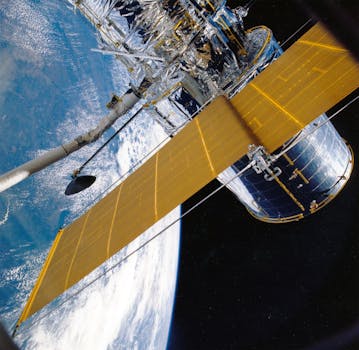
GEO Satellites: Understanding the Technology and Applications of Geostationary Orbit Satellites
GEO satellites, or geostationary orbit satellites, are a type of satellite that orbits the Earth at an altitude of approximately 36,000 kilometers. At this altitude, the satellite’s orbital period matches the Earth’s rotational period, allowing it to remain stationary in the sky. This unique characteristic makes GEO satellites ideal for a variety of applications, including telecommunications, weather forecasting, and space exploration.
The first GEO satellite was launched in 1963, and since then, hundreds of satellites have been placed in geostationary orbit. These satellites have revolutionized the way we communicate, navigate, and understand our planet. In this article, we will explore the technology and applications of GEO satellites, as well as their impact on modern society.
The Technology Behind GEO Satellites
GEO satellites are designed to operate in the harsh environment of space, where temperatures can range from -270°C to 120°C. They are typically equipped with solar panels, which provide power, and a propulsion system, which maintains their orbit. The satellite’s payload, which can include transponders, antennas, and sensors, is designed to perform a specific function, such as transmitting signals or collecting data.
One of the key technologies used in GEO satellites is the transponder, which is a device that receives a signal, amplifies it, and then retransmits it. Transponders are used in telecommunications satellites to relay signals between different locations on Earth. They are also used in weather satellites to transmit images and data back to Earth.
Applications of GEO Satellites
GEO satellites have a wide range of applications, including telecommunications, weather forecasting, and space exploration. Telecommunications satellites use GEO satellites to provide telephone, internet, and television services to remote or underserved areas. Weather satellites use GEO satellites to monitor the weather and provide early warnings of severe weather events.
Space exploration is another key application of GEO satellites. They are used to study the Earth’s climate, monitor the environment, and provide navigation services. For example, the Global Positioning System (GPS) uses a network of GEO satellites to provide location information to users on the ground.
The Impact of GEO Satellites on Modern Society
GEO satellites have had a profound impact on modern society. They have enabled global communications, facilitated international trade, and improved our understanding of the Earth and its climate. They have also played a critical role in disaster response and recovery, providing vital information and services to affected areas.
However, the use of GEO satellites also raises concerns about space debris, which can pose a hazard to operational satellites and other space-based assets. Additionally, the increasing number of satellites in geostationary orbit has raised concerns about congestion and interference, which can impact the performance of satellite systems.
Conclusion
In conclusion, GEO satellites are a crucial part of modern telecommunications and space exploration. Their unique characteristics and capabilities make them ideal for a variety of applications, from telecommunications and weather forecasting to space exploration and disaster response. As the use of GEO satellites continues to grow, it is essential that we address the challenges associated with their use, such as space debris and congestion, to ensure the long-term sustainability of these vital systems.




